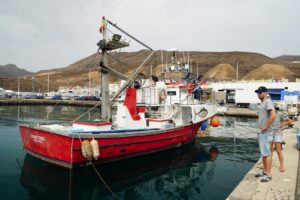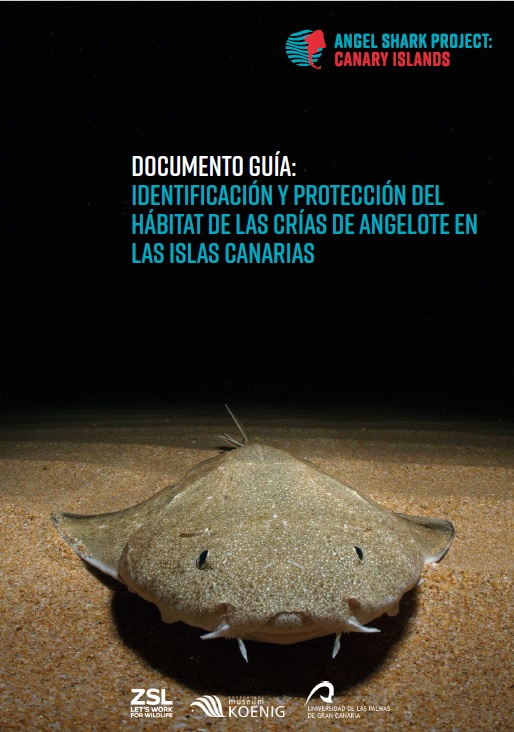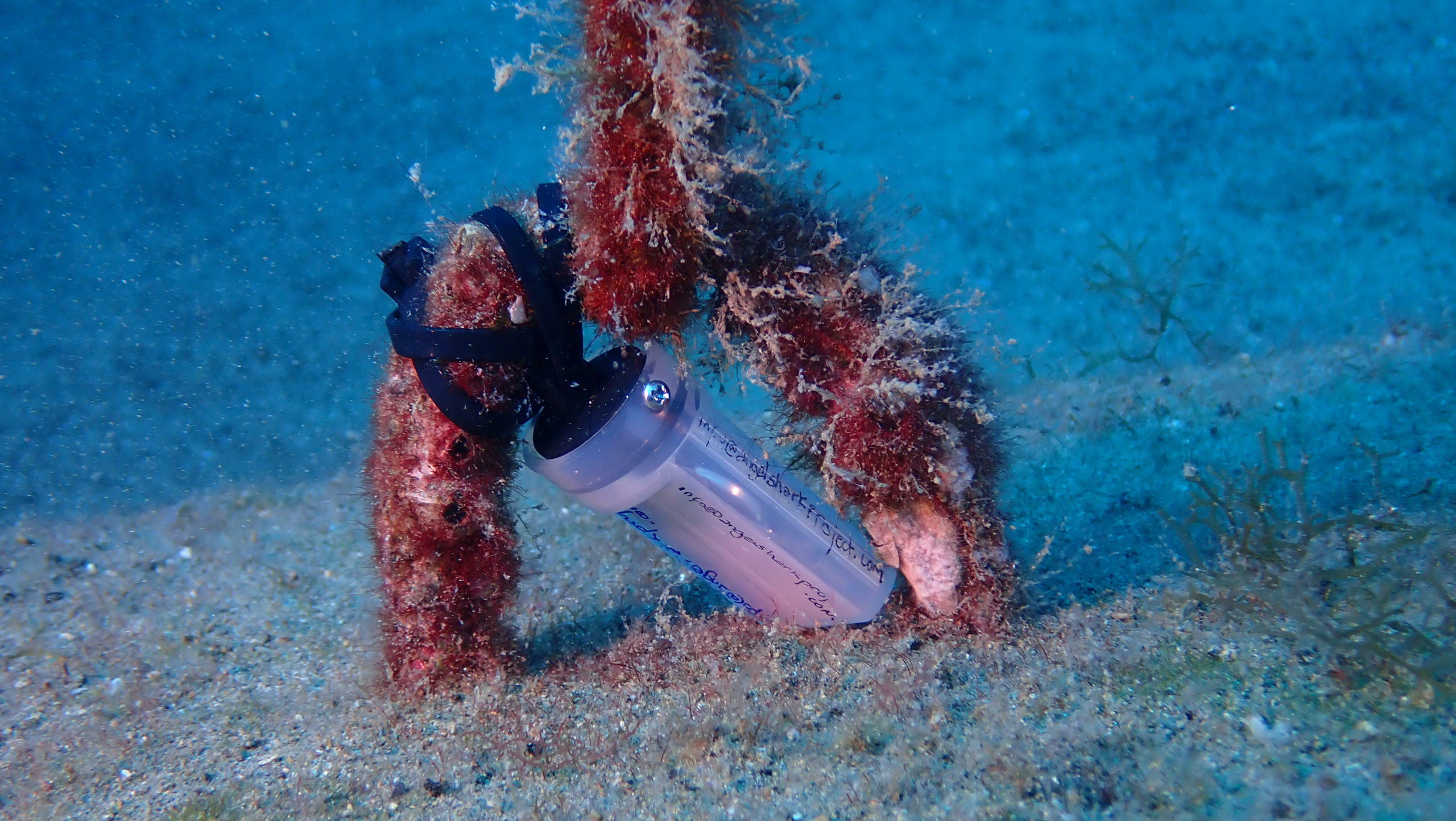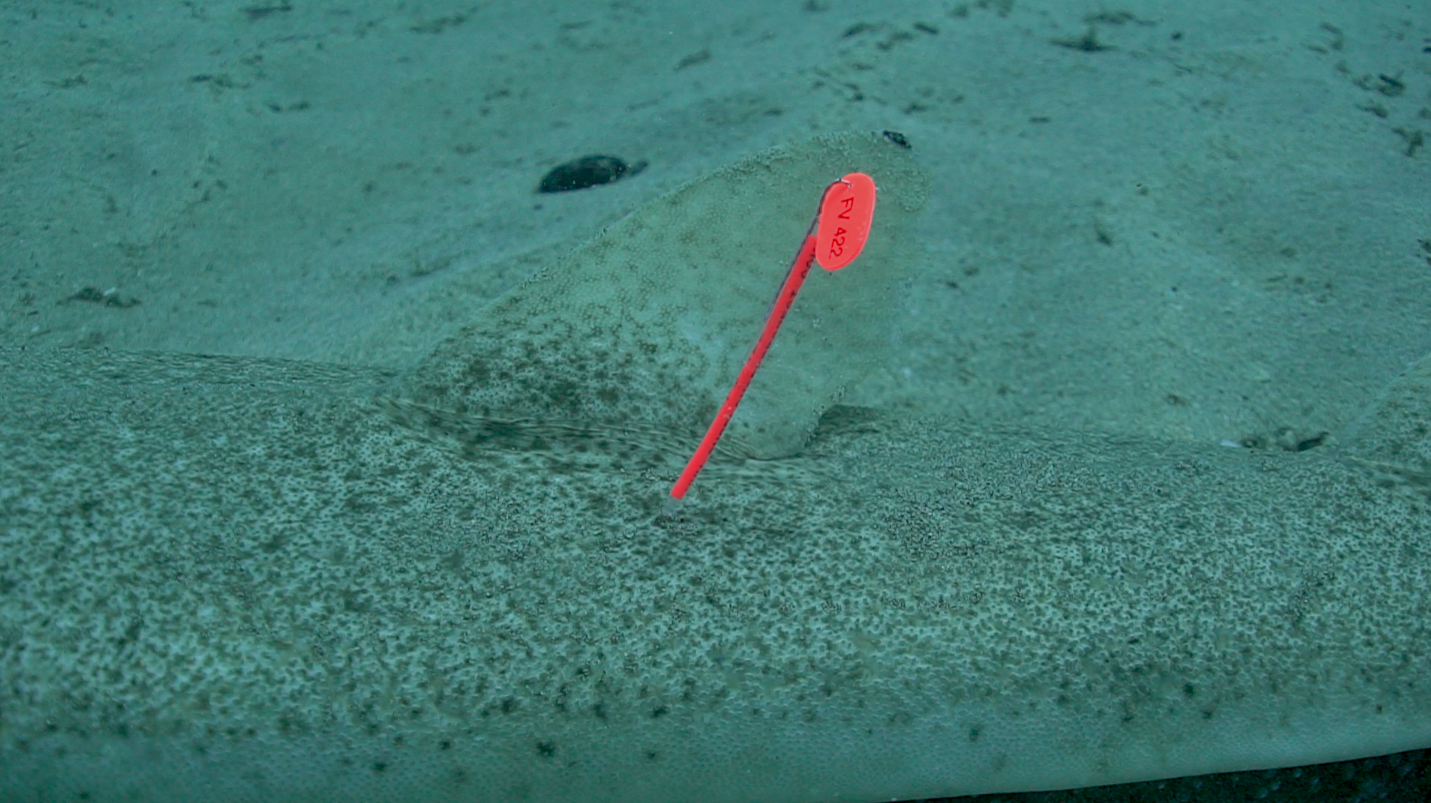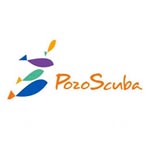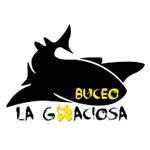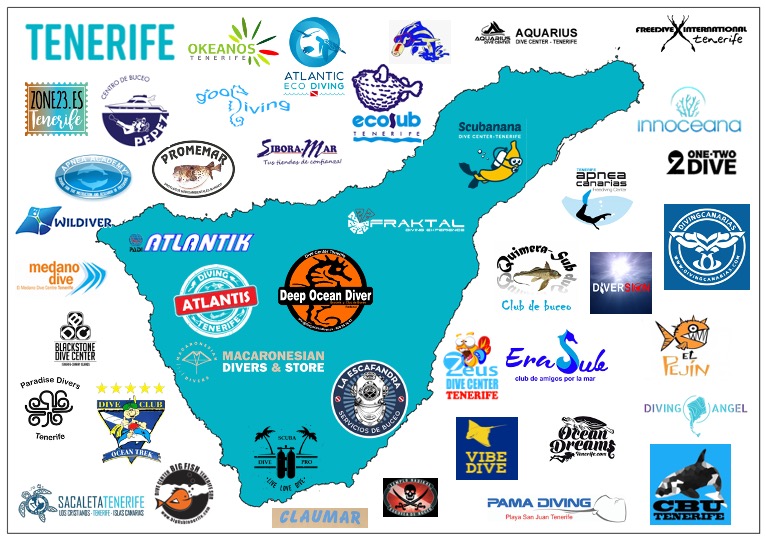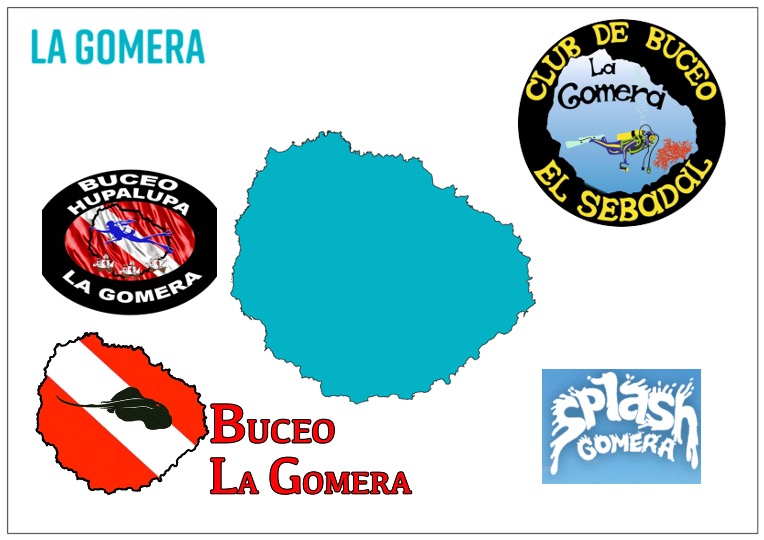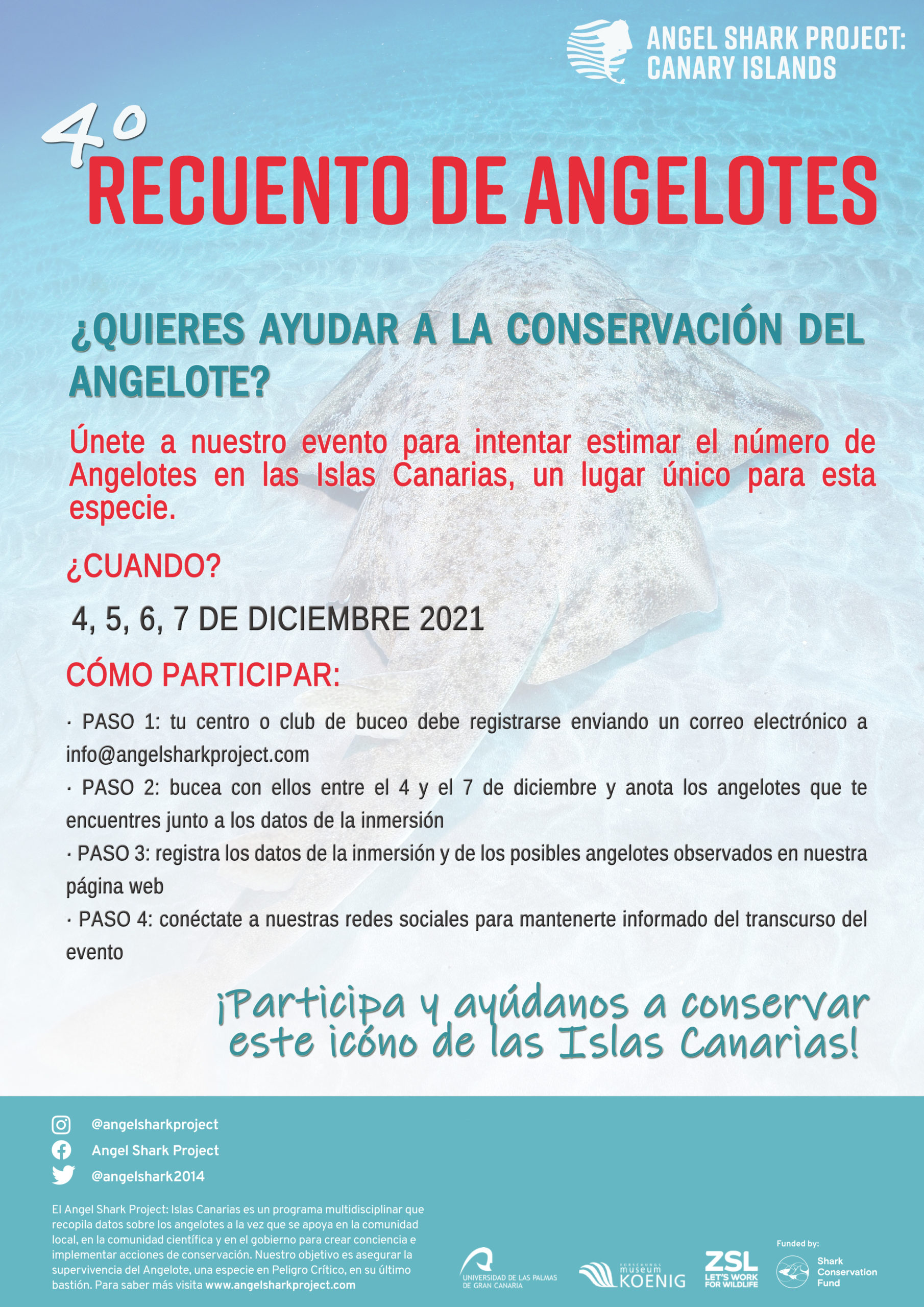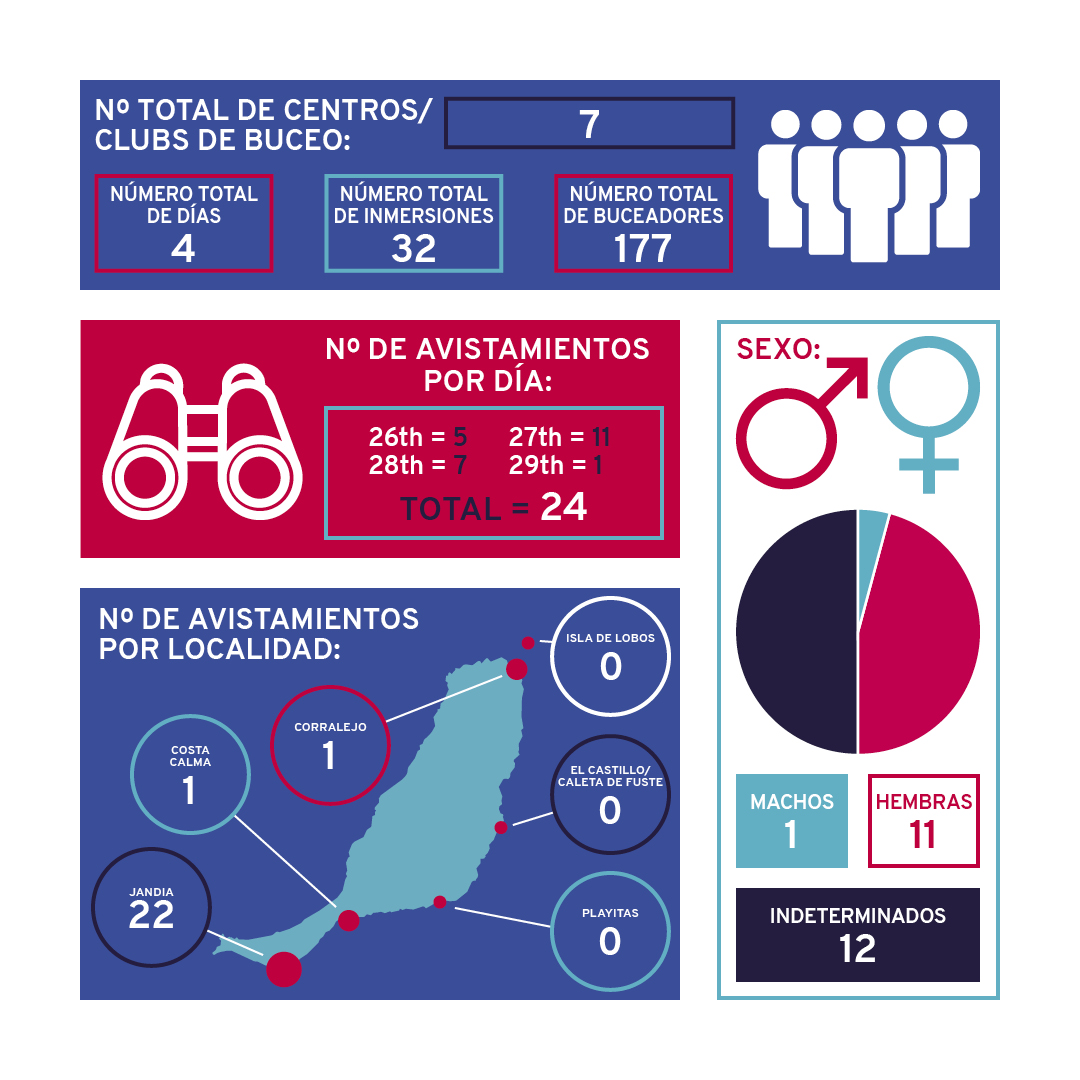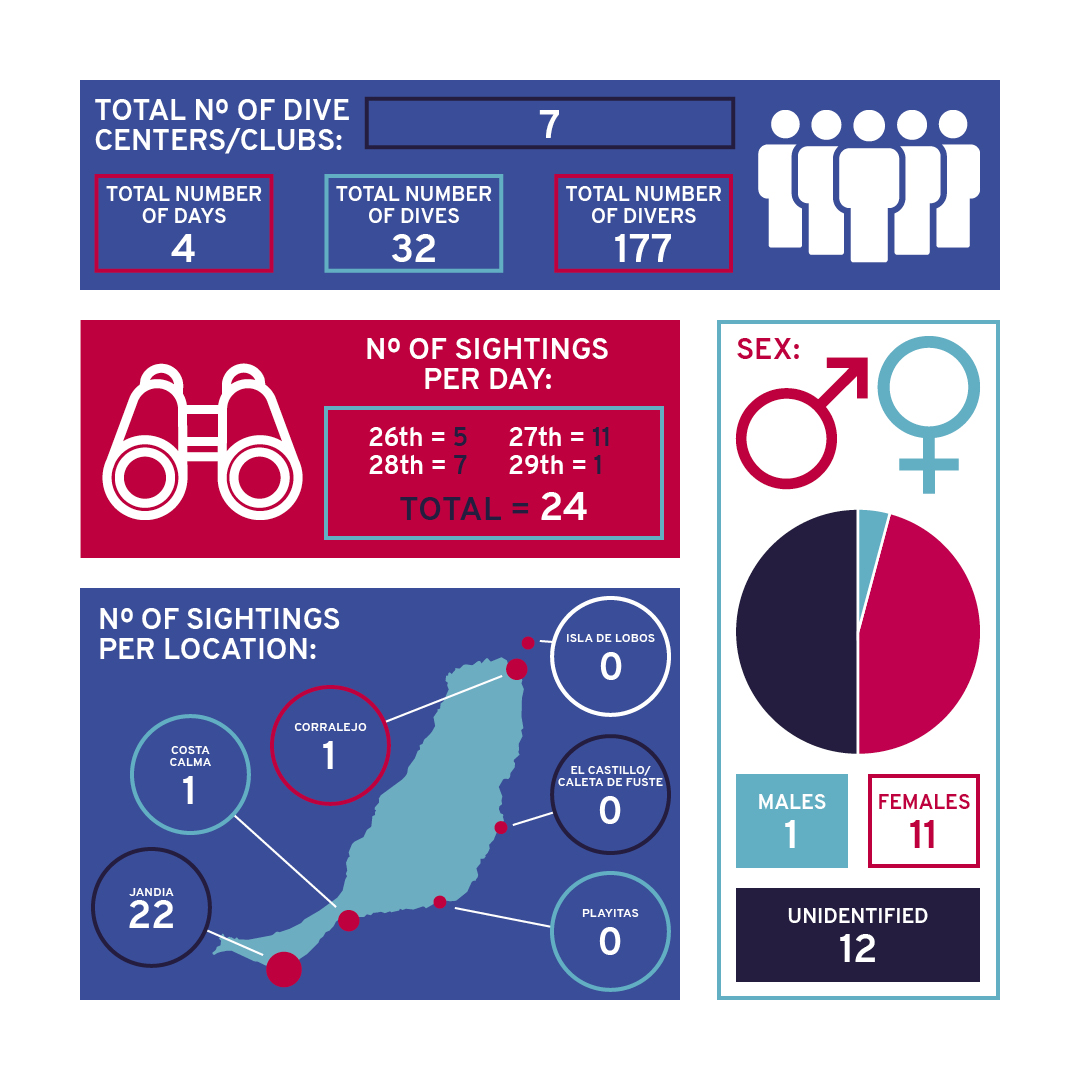El etiquetado visual es una forma fácil y eficaz de recopilar información sobre el uso del hábitat de Angelote. Se coloca una etiqueta de color (un color diferente para cada isla) con un código único entre las dos aletas dorsales del tiburón, eso facilita a los buceadores la identificación de los individuos.
Si encuentras un Angelote etiquetado, informa del color y del número de la etiqueta en el mapa de avistamientos.
Los colores para cada isla son:
- Lanzarote y La Graciosa: Verde
- Fuerteventura: Naranja
- Gran Canaria: Rosa
- Tenerife: Amarillo/Marrón
Nuestra metodología de marcaje submarino es única y ha sido desarrollada para garantizar que el estrés para los tiburones sea mínimo.

